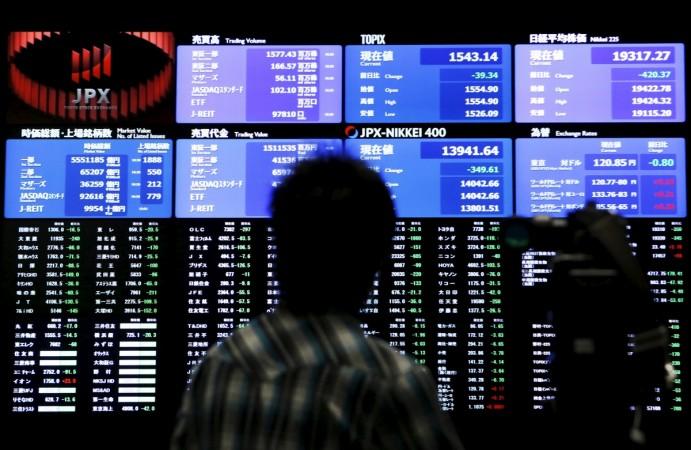
Asian stock markets were tentative on Tuesday as they braced for a run of policy announcements from the world's major central banks this week, with all eyes on the Bank of Japan's meeting later in the day after it stunned markets in January by adopting negative rates.
MSCI's broadest index of Asia-Pacific shares outside Japan .MIAPJ0000PUS dipped 0.1 percent in early trade, but still near 2-1/2-month highs touched on Monday. It was dragged down by a 0.4 percent fall in resource-heavy Australian shares following a drop in oil and commodity prices.
Japan's Nikkei tacked on 0.1 percent after hitting a six-week high on Monday.
Wall Street shares were narrowly mixed. The Dow Jones industrial average advanced 0.09 percent, while the S&P 500 lost 0.13 percent.
With the global economy slowing and many countries facing deflationary pressures, investors' attention was squarely on policy decisions from the world's major central banks.
The Bank of Japan kicks off its meeting on Tuesday, followed by the U.S. Federal Reserve on Wednesday and the Bank of England and the Swiss National Bank on Thursday.
"On the whole you could say the recovery in markets so far has been just a reversal from sharp falls earlier this year. There are hopes that the Fed may be more dovish but we need to see whether there will be more supportive stance from central banks," said Hirokazu Kabeya, chief global strategist at Daiwa Securities.
The BOJ is widely expected to keep its policy on hold after its surprise decision in January to introduce negative interest rates raised worries about banks' profitability.
Even those wary of the side effects of easing expect BOJ add to its stimulus in coming month, given heightening risk to Japan's fragile economic recovery.
The Fed is unlikely to raise rates this week but it will likely make clear that as long as U.S. inflation and jobs continue to strengthen, economic weakness overseas won't stop rates from rising fairly soon.
Still, a consensus in the market is that fresh forecasts from the Fed's 17 officials released after the meeting will signal perhaps two or three rate hikes this year, a retreat from their projection in December for four or more increases in 2016.
The interest rate futures markets are even more cautious, pricing only one rate hike by year-end.
U.S. Treasury debt prices rose on Monday, rebounding from an aggressive sell off last week, as investors tried to get back to neutral positions ahead of this week's two-day Federal Open Market Committee meeting.
The 10-year U.S. notes yield stood at 1.961 percent US10YT=RR, off a six-week high of 1.986 percent hit on Friday.
Oil prices are running out of steam on concerns that a six-week market recovery may have gone beyond fundamentals as U.S. crude stockpiles continue to build and Iran is seen showing little interest in joining major producers in freezing production.
U.S. crude futures CLc1 last traded at $37.28 a barrel, up slightly from Monday settlement.
On Monday it fell 3.4 percent to $37.18 a barrel, while Brent LCOc1 finished down 2 percent at $39.53.
In the currency market, the euro slipped further from its three-week high hit after European Central Bank President Mario Draghi indicated he does not plan further cuts in interest rates.
The euro traded at $1.1101, off Thursday's high of $1.1218. The yen was little changed at 113.80 to the dollar while the British pound changed hands at $1.4283, off Friday's three-week high of $1.4437.









